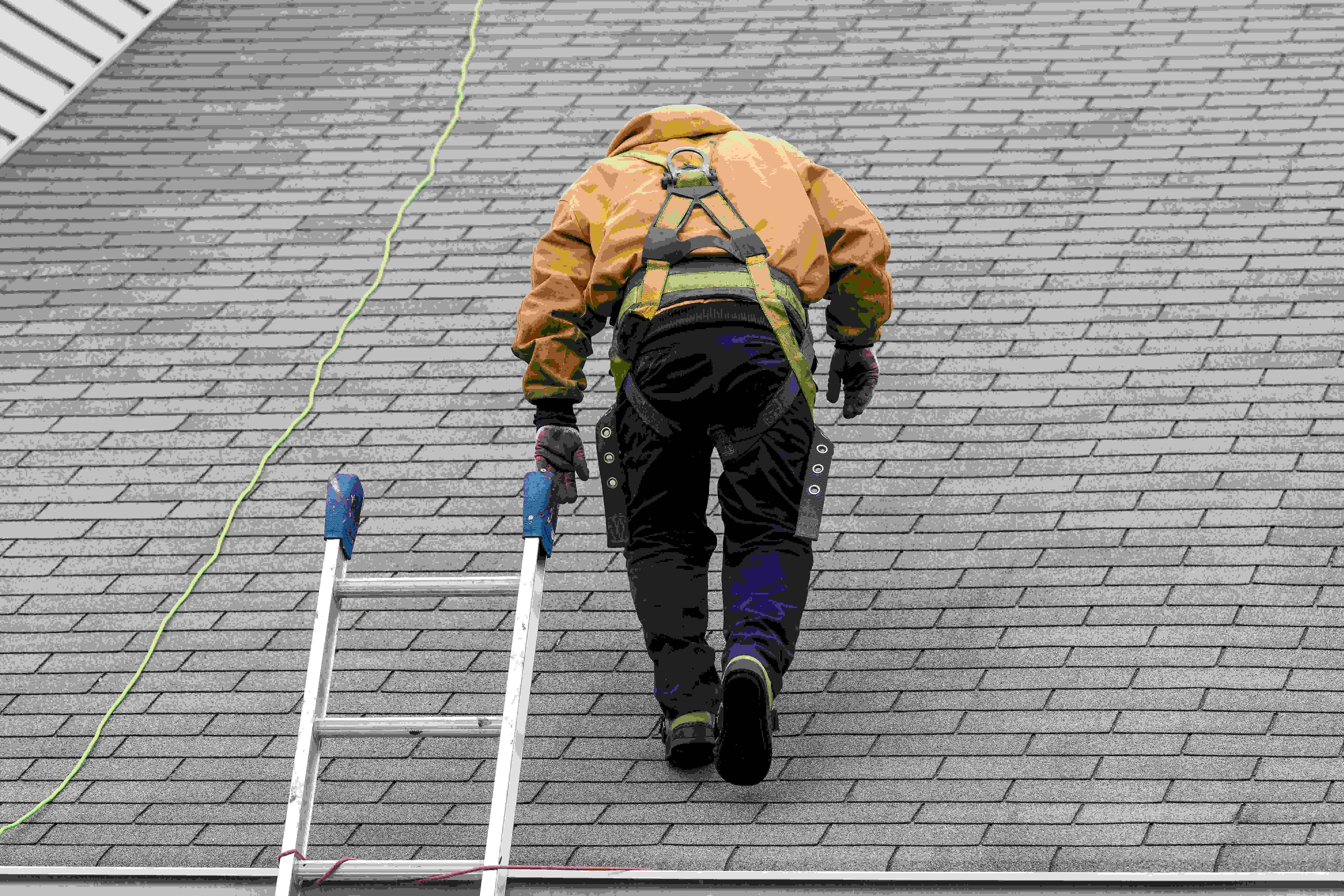What You Need to Know About Roof Inspections
This roof inspection guide explains what happens during an inspection, how long they take, cost factors, and how to prepare for one.

This roof inspection guide explains what happens during an inspection, how long they take, cost factors, and how to prepare for one.

While homeowners should perform routine DIY checks, there’s no substitute for a professional roof inspection. An expert’s evaluation will help ensure your entire roofing system functions correctly and let you know if there are developing issues you need to address before they become costly.
You should schedule a professional inspection at least once annually during spring or fall. It’s also smart to call a professional if you notice any water leaks on your ceiling, experience extreme weather, have recently purchased your home, or are thinking about selling it.
When you schedule an inspection, be sure to schedule it during a time when you will be there to answer the inspector’s questions and grant access to the interior.

Additionally, it’s recommended to remove any debris from the roof and gutter system (only if it’s safe for you to do so), as this will make the process simpler, faster, and safer for the contractor.
Lastly, if you recently experienced storm damage or noticed issues during your routine checks, like loose flashing, take photos or note the areas of damage to your roofing company.
The entire goal of the inspection is to analyze the condition of the roof and proactively identify issues with the roofing system.
During a roof inspection, your contractor will analyze each component of your roofing system, including the structural integrity of the framing and sheeting, the condition of the shingles and other roofing materials, your attic ventilation system, and the ceilings and walls beneath the roof.
The roofing inspection is typically split into two portions: exterior and interior.
For the exterior inspection, the roofing contractor will carefully look for:
On the inside of the structure, your roofing contractor will scan the attic for wet wood, drooping or saturated insulation, light infiltration, insects or animals, and proper ventilation. They will also scan the rest of your home’s interior for sagging ceilings, water stains, rotten wood, and mold and mildew development.
The amount of time needed to perform a roof inspection depends on several factors, including the square footage of your roof, and its pitch, height, and layout. Plus, roofs with multiple chimneys, air conditioners, skylights, and/or a lot of flashing take longer to inspect. So, a small, single-story, easy-to-walk-on roof might only take 45 minutes to an hour to inspect, whereas a multi-story, steep-pitched roof could take several hours.
The cost of a professional roof assessment will vary based on multiple factors, including:
Note that it’s much faster, and therefore, less expensive, to inspect a roof in good shape relative to a severely degraded one. Additionally, if the inspector spots an issue, they will need time to determine its origin and the necessary solution.
Roofing is a specialty vocation and can be quite dangerous. Most homeowners do not have the skills or experience to perform a roof inspection properly.
DIY inspections often fail to discern hidden or subtle problems that an expert could identify. Plus, when you inspect your roof yourself, you won’t receive any detailed reporting that can be used to help sell your home or validate insurance claims.
Scanning your roof from the ground for signs of obvious damage or performance problems is always a good idea. You can also zoom in on binoculars for a better view. However, without sufficient expertise, you may not recognize a roofing problem even if you’re looking directly at it.
Comparatively, when you hire a professional to inspect your roof, you’ll benefit from their specialized training and knowledge and an authoritative inspection report that lists all major and minor roofing system issues. And all without you having to leave the ground or lift a finger.
Although each roofing company has a unique inspection report template, they all share the same goal of relaying pertinent information about the roof’s condition to the homeowner.
Typically, a report starts with general information about the roofing system, including the age, height off the ground, type of roof, materials used, roof pitch, and square footage.
The introductory information is followed by more specific details about each roofing system component. The report may include handwritten documentation, photographs, and diagrams. Reports may also include industry-specific jargon, which many homeowners find challenging to understand, like buckling (shingles curving upward) or curling (the edges of the shingles curving upward), but your contractor should thoroughly explain any problems to you after the inspection is completed. If there are any terms you don’t understand, always ask your inspector for further clarification.
Most reports also include estimates for specific damage remediation or the cost to replace the entire roofing system. Whatever the case, it’s always important to resolve roofing problems as quickly as possible. You never want to save roofing repairs for a “rainy day” because they only worsen with time.
If you’re due for an inspection, reach out to L&S Home Improvements. We proudly serve homeowners throughout Macomb, Oakland, and Wayne counties, and are known for our transparent communication, comprehensive work, and high quality standards.
Please fill out our online form today to schedule your inspection. We also provide hassle-free insurance claims assistance for homeowners experiencing storm damage.